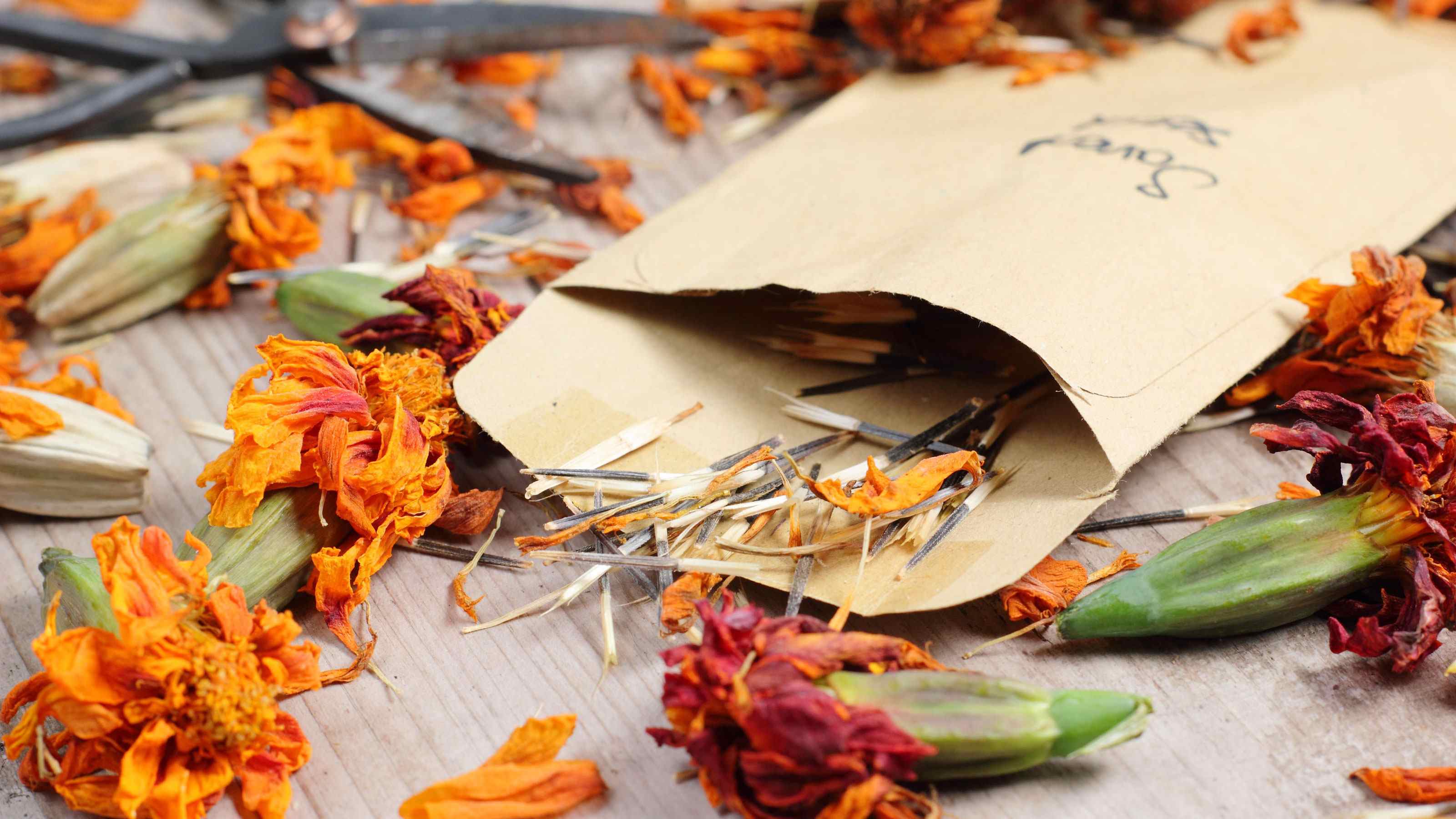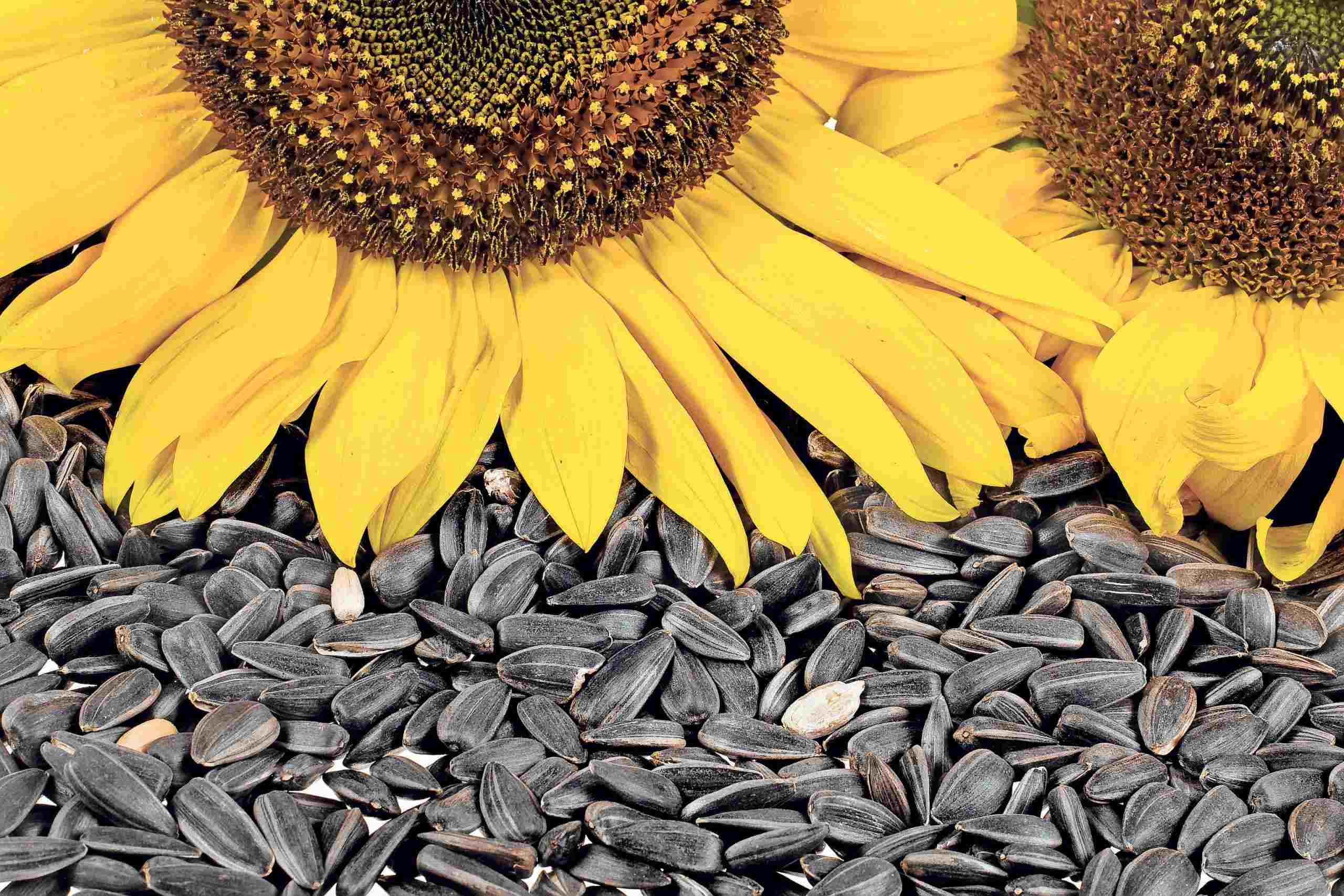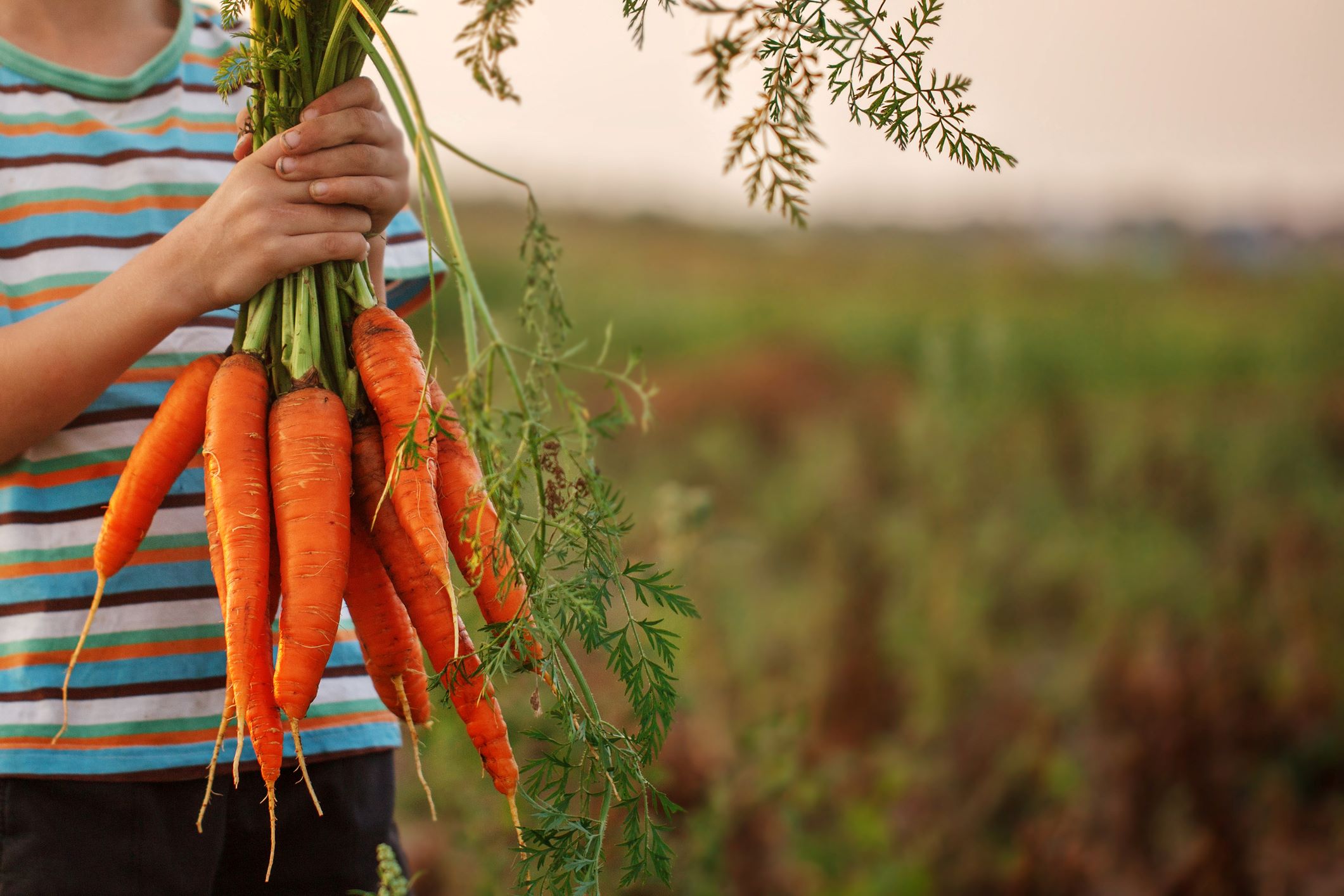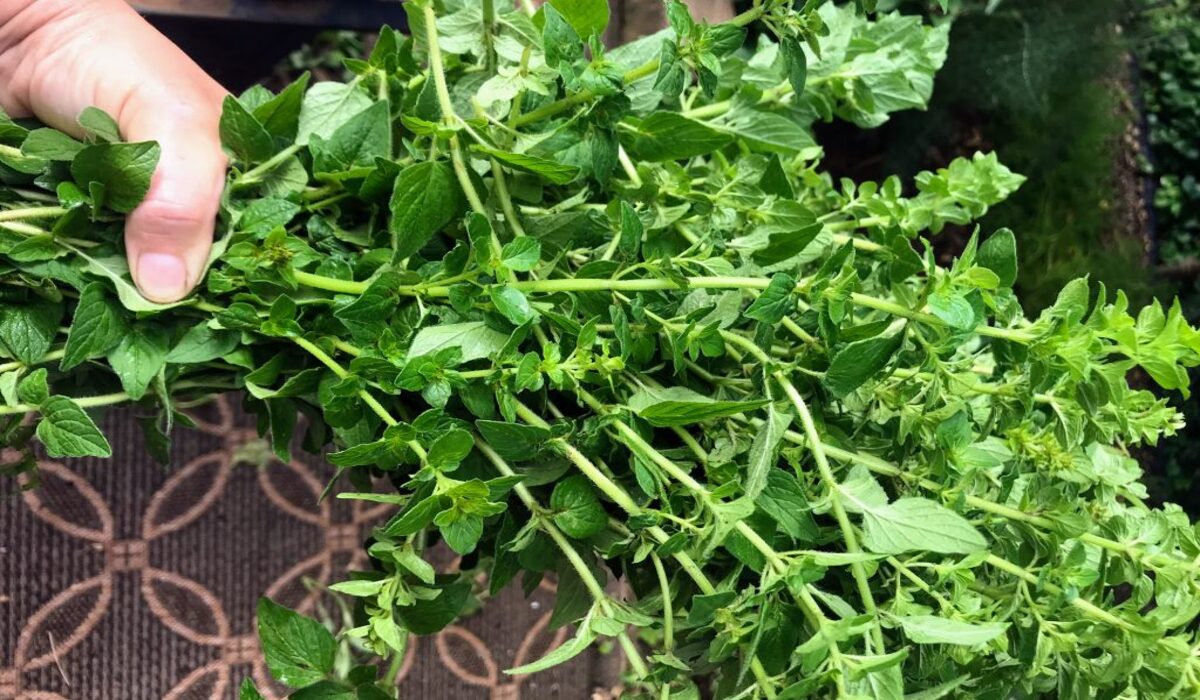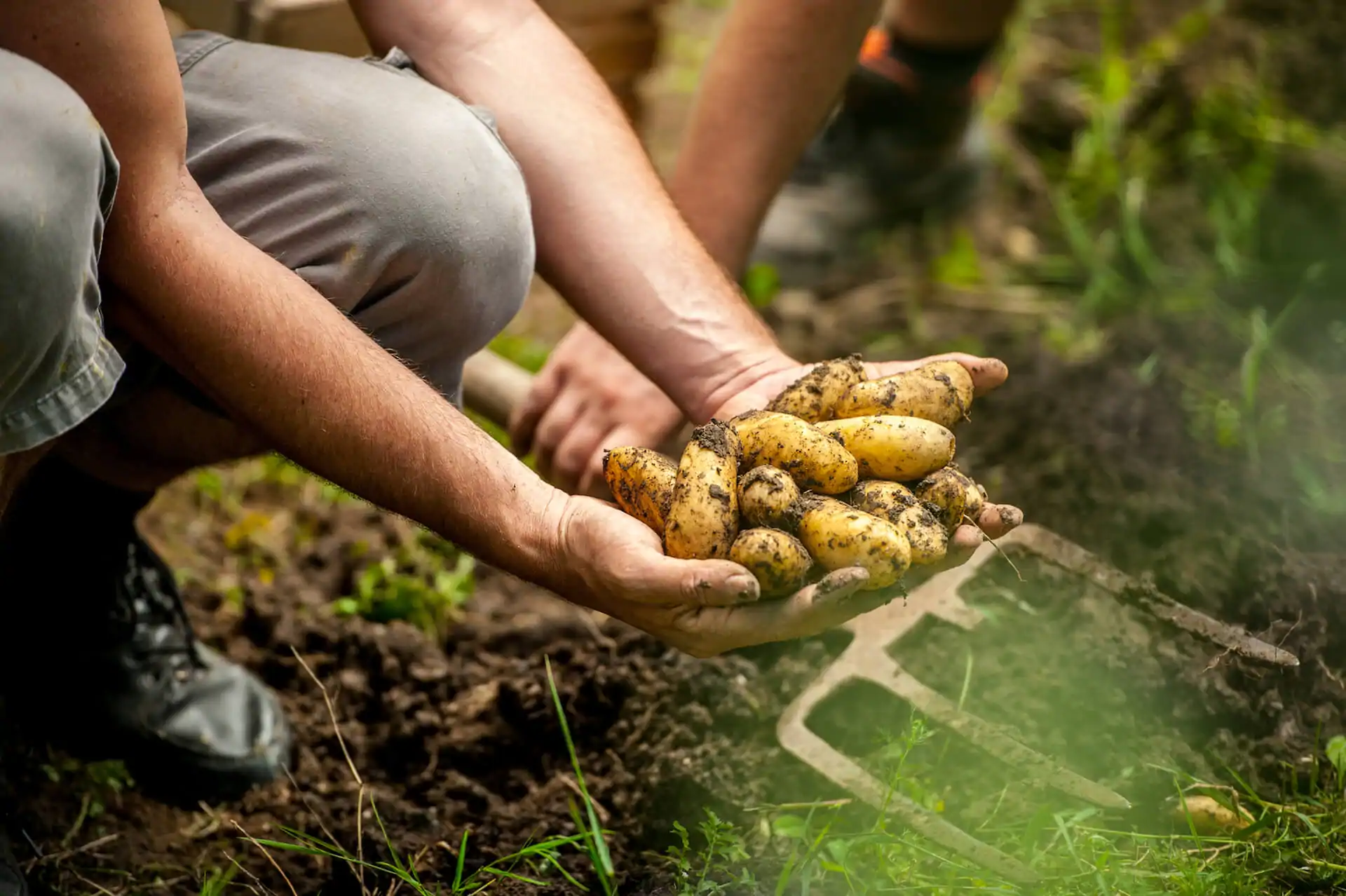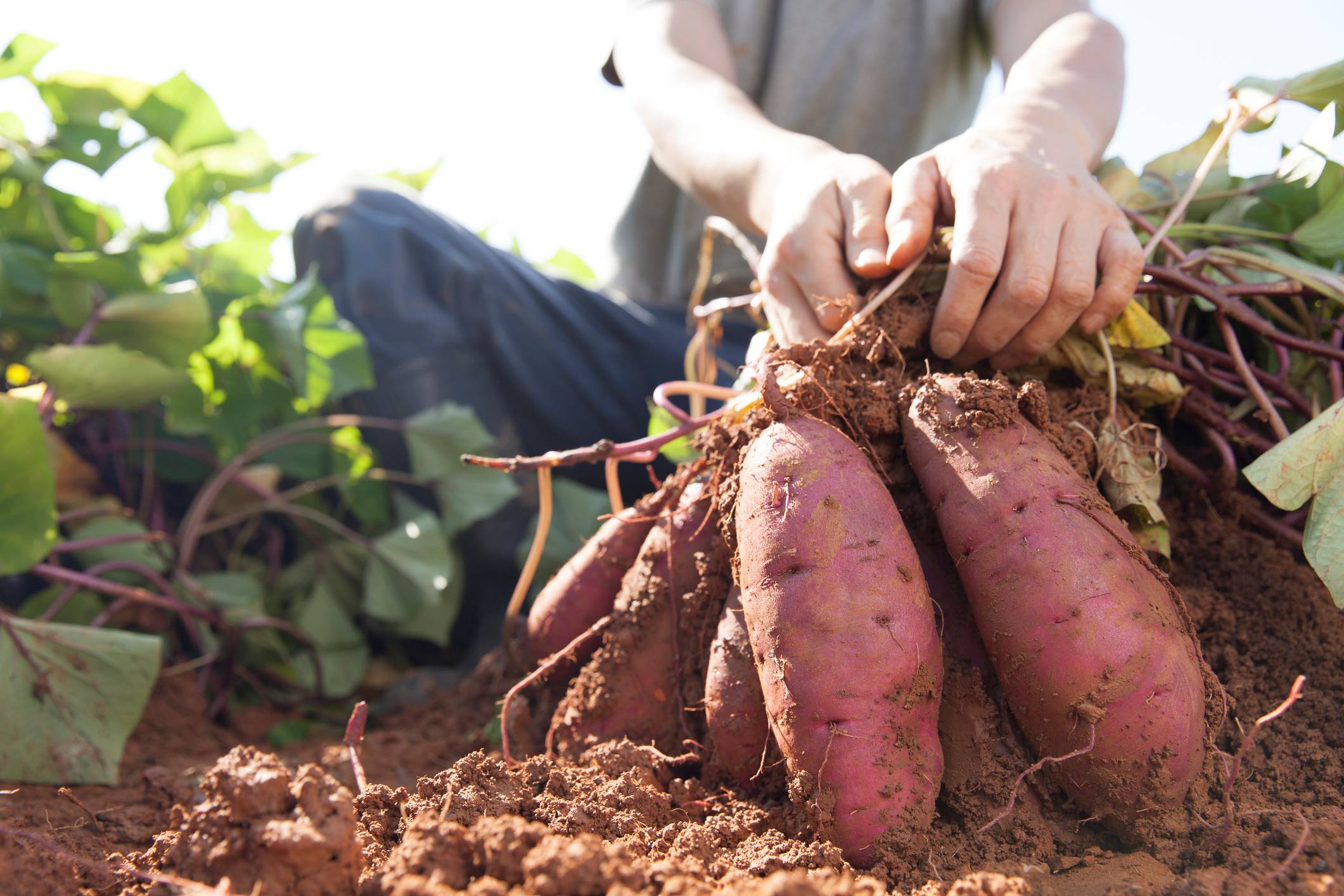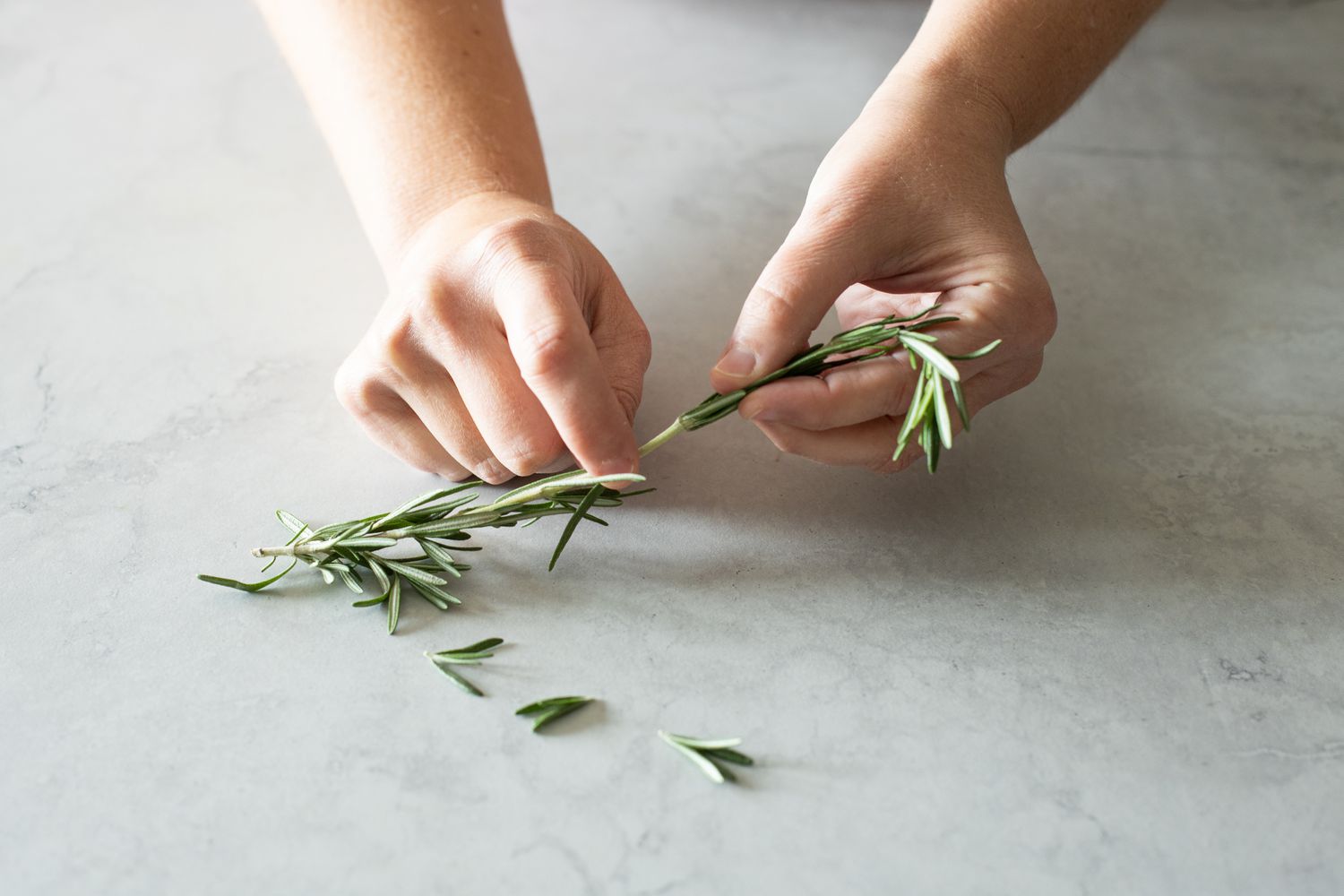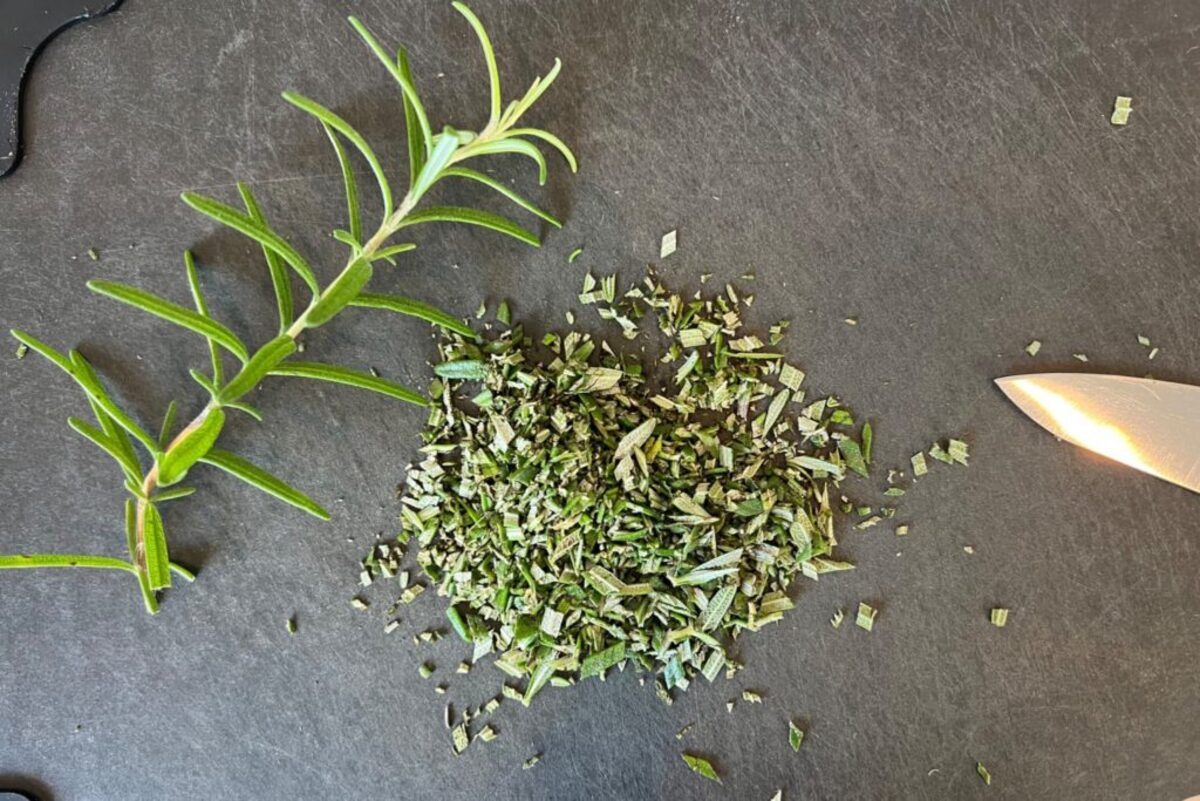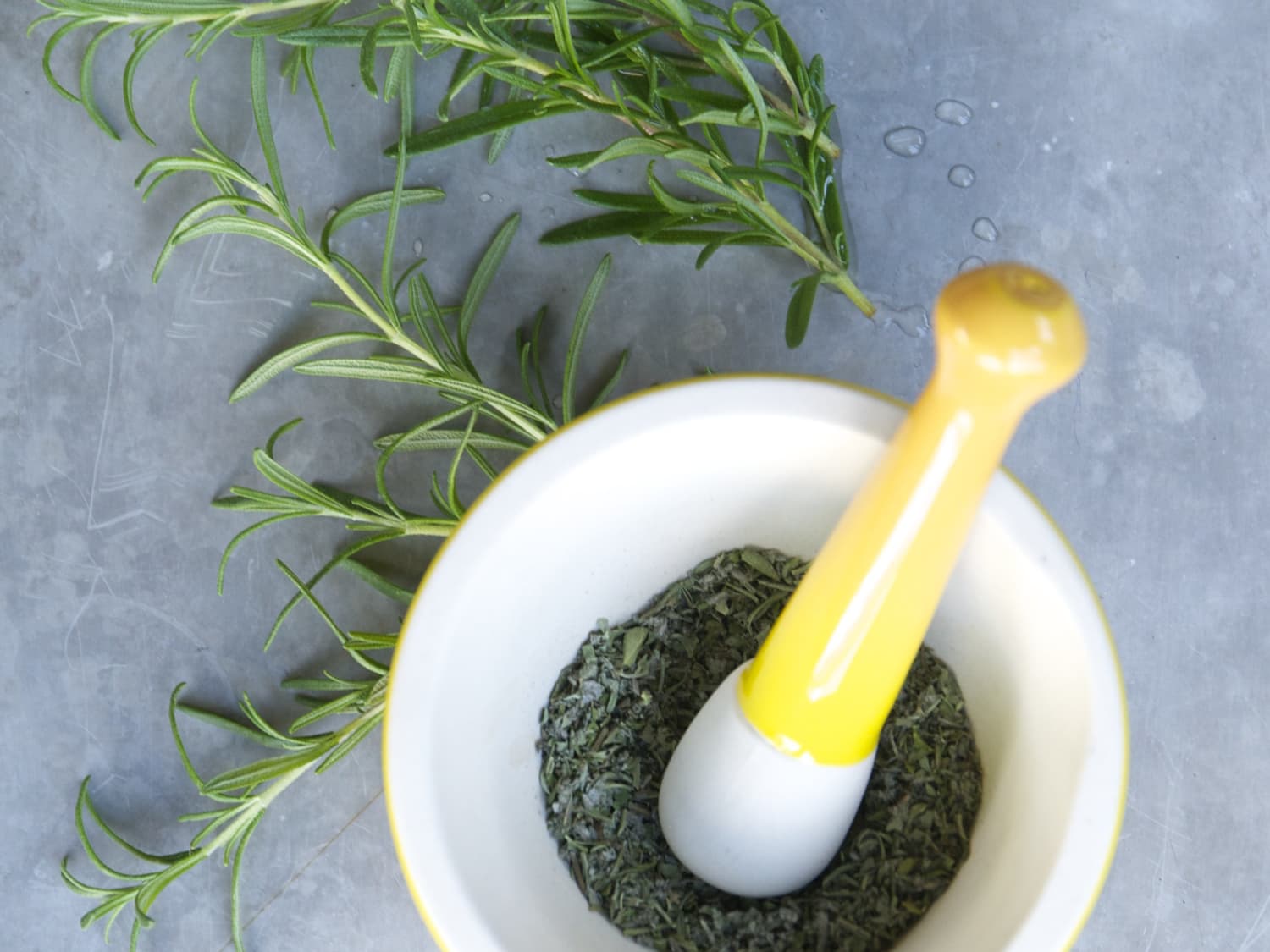Home>Types of Gardening>Edible Gardening>How To Harvest Rosemary
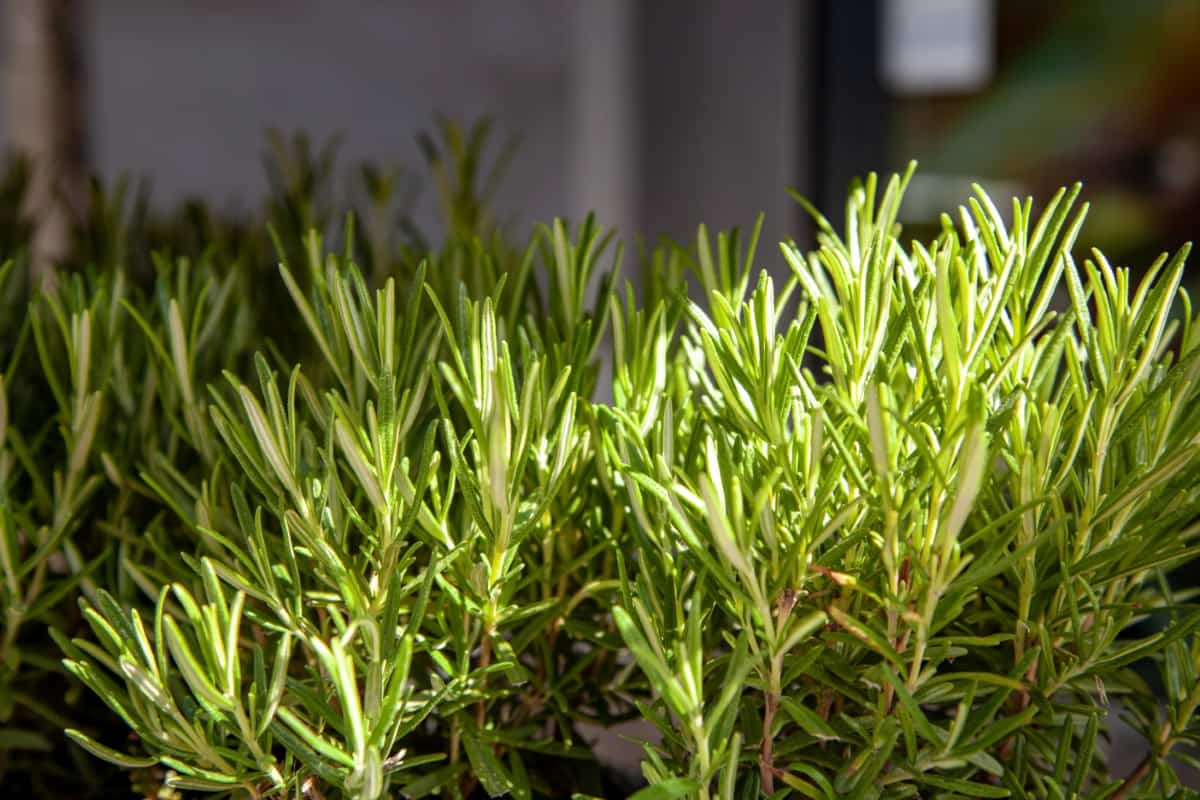

Edible Gardening
How To Harvest Rosemary
Published: January 29, 2024
Learn how to harvest rosemary and add this versatile herb to your edible gardening repertoire. Discover expert tips for cultivating and enjoying the benefits of fresh, homegrown rosemary.
(Many of the links in this article redirect to a specific reviewed product. Your purchase of these products through affiliate links helps to generate commission for Chicagolandgardening.com, at no extra cost. Learn more)
Table of Contents
Introduction
Welcome to the wonderful world of edible gardening! If you’re looking to add a touch of flavor and fragrance to your dishes, growing your own herbs is the perfect solution. And when it comes to versatile and aromatic herbs, rosemary takes the cake.
Rosemary (Rosmarinus officinalis) is an evergreen herb native to the Mediterranean region. It is known for its distinctive pine-like scent and robust flavor, making it a popular addition to a wide range of culinary creations. Beyond its culinary uses, rosemary is also renowned for its medicinal properties and its ability to attract beneficial insects to the garden.
Whether you’re a seasoned gardener or just starting out, harvesting rosemary is a rewarding experience that allows you to enjoy the freshest flavors in your kitchen. In this article, we will explore the art of harvesting rosemary, from selecting the right time to storing your bountiful harvest. So, put on your gardening gloves and let’s dive in!
Selecting the Right Time
Timing is crucial when it comes to harvesting rosemary. To ensure the best flavor and aroma, it’s important to choose the right time to harvest your herb. The ideal time to harvest rosemary is in the morning, after the dew has dried but before the temperatures rise too high.
When determining the right time to harvest, take into consideration the growth stage of your rosemary plant. Young rosemary plants should be allowed to establish their roots and grow for at least a year before harvesting. This will ensure a more robust and flavorful harvest.
For established rosemary plants, you can start harvesting once the plant reaches a height of about 8-12 inches. At this stage, the plant will have developed enough foliage to provide you with a substantial harvest without impacting its overall health and growth.
Furthermore, it’s important to keep an eye on the weather conditions. Avoid harvesting rosemary during periods of excessive heat or humidity, as this can cause the essential oils in the leaves to dissipate, resulting in a less flavorful harvest.
By selecting the right time to harvest, you’ll be able to capture the full essence of rosemary’s flavor and aroma, ensuring a truly satisfying culinary experience.
Tools Required
Harvesting rosemary requires minimal tools, making it an easy task for gardeners of all levels. Here are the essential tools you’ll need:
- Garden Shears: A pair of sharp garden shears is essential for cutting through the woody stems of rosemary. Look for shears with a comfortable grip and a strong blade to make clean cuts.
- Gloves: While not necessarily a tool, wearing gardening gloves is always a good idea to protect your hands from potential scratches and irritation.
- Basket or Container: You’ll need a container to collect your harvested rosemary. A basket or container with handles makes it easier to carry your harvest back to the kitchen.
- Pruning Shears (optional): If you plan on pruning your rosemary plant to encourage healthy growth, having a pair of pruning shears can be handy.
These basic tools are readily available at any garden supply store or online. Investing in high-quality tools will ensure they last for multiple seasons of rosemary harvesting.
Remember to clean and sanitize your tools before and after use to prevent the spread of disease and to maintain the health of your rosemary plant. This can be done by wiping them down with a disinfectant or dipping them in a solution of equal parts water and bleach.
Having these tools on hand will make the process of harvesting rosemary a breeze, allowing you to enjoy the freshest flavors in your culinary creations.
Preparing the Harvesting Area
Before you begin harvesting your rosemary, it’s essential to prepare the harvesting area to ensure a smooth and efficient process. Here are some steps to follow:
- Clear the Area: Start by removing any weeds or unwanted plants from around the rosemary plant. This will provide better access to the rosemary and prevent any interference during the harvesting process.
- Water the Plant: Give your rosemary plant a thorough watering a day or two before harvesting. This will ensure that the plant is well-hydrated, making it easier to trim and reducing the chances of damaging the plant.
- Inspect for Pests: Take a moment to inspect the plant for any signs of pests or diseases. If you notice any issues, treat the plant accordingly before proceeding with the harvest.
- Prune if Necessary: If your rosemary plant has become overgrown or has straggly branches, you may want to consider pruning it before harvesting. This will not only tidy up the plant but also promote new growth and a healthier plant overall.
By preparing the harvesting area, you’ll create an environment that is conducive to a successful harvest. This ensures that you can focus on the task at hand and enjoy the process of harvesting your homegrown rosemary.
Harvesting Techniques
When it comes to harvesting rosemary, there are a few different techniques you can use, depending on your preference and the specific needs of your culinary endeavors. Here are three common harvesting techniques:
- Individual Leaf Harvest: This technique involves plucking individual rosemary leaves from the plant as needed. Simply hold the stem and gently pull off the leaves using your fingers. This method is ideal if you only need a small amount of rosemary for a particular recipe.
- Partial Stem Harvest: For a larger amount of rosemary, you can harvest partial stems. Using a pair of sharp garden shears, cut the stem just above a leaf node or where the stem branches off. This encourages new growth in the plant and provides larger quantities of rosemary.
- Full Stem Harvest: If you’re planning to dry or store rosemary for later use, a full stem harvest is recommended. Cut the entire stem from the plant, again just above a leaf node or where the stem branches off. This method allows you to collect longer sprigs of rosemary.
Regardless of the harvesting technique you choose, always make clean cuts to avoid damaging the plant. Avoid tearing or ripping the stems, as this can lead to disease and inhibit regrowth.
It’s worth noting that rosemary is a resilient herb, and regular harvesting actually promotes new growth. So don’t be afraid to harvest your rosemary frequently, as it will result in a fuller and healthier plant in the long run.
Experiment with these different harvesting techniques to find the method that suits your needs and culinary preferences. Enjoy the satisfaction of harvesting your own fresh rosemary for a flavor-packed addition to your dishes!
Cutting Rosemary Sprigs
When it comes to harvesting rosemary sprigs, there are a few key steps to follow to ensure a successful and efficient process. Here’s a step-by-step guide on how to cut rosemary sprigs:
- Select the Branch: Choose a healthy branch of rosemary that has matured and has plenty of foliage. Avoid cutting from the youngest or newest growth, as these sprigs are still developing.
- Locate the Node: Look for the point where the branch meets the stem and a set of leaves has grown. This is called a node. It’s important to cut the sprig just above a node, as this encourages new growth and will leave the plant looking neat and tidy.
- Prepare the Shears: Make sure your garden shears are clean and sharp. Dull or dirty shears can crush or damage the rosemary stems, hindering their growth and flavor.
- Cut the Sprig: Position the shears just above the node, and with a single, swift motion, cut the stem at a slight angle. This angled cut allows water to run off the stem, reducing the chances of rot or disease.
- Repeat the Process: Continue cutting rosemary sprigs, repeating the steps above, until you have harvested the desired amount. Always leave at least one-third of the plant intact to ensure healthy regrowth.
After cutting, inspect your harvested rosemary sprigs for any damaged leaves or pests. Remove any unwanted foliage and give the sprigs a gentle shake to remove any loose debris.
Remember to handle the delicate leaves of rosemary gently, as they can bruise easily and lose some of their aromatic oils.
By following these cutting techniques, you’ll be able to harvest rosemary sprigs efficiently while maintaining the health and vitality of your plant.
Pruning the Rosemary Plant
Pruning your rosemary plant not only helps maintain its shape and size but also ensures its overall health and productivity. Regular pruning encourages new growth, prevents the plant from becoming woody, and promotes a bushier and more compact form. Here’s a step-by-step guide on how to prune your rosemary plant:
- Timing: The best time to prune rosemary is in the spring, just before new growth starts. Avoid pruning during the flowering or dormant periods.
- Assess the Plant: Take a close look at the plant and identify any dead or damaged branches. These should be pruned first to improve the plant’s overall health.
- Choose the Right Branches: Identify which branches need to be pruned based on their length, shape, and vigor. Look for branches that appear straggly or have outgrown the desired shape of your rosemary plant.
- Make the Cut: Using clean and sharp pruning shears, make clean cuts just above a leaf node or where the stem branches off. Be mindful not to remove too much foliage at once, as it can stress the plant.
- Shape the Plant: As you prune, step back and assess the overall shape of the plant. If needed, trim the top and sides of the rosemary to achieve a more uniform and compact appearance. Avoid pruning too aggressively, as rosemary recovers slowly from heavy pruning.
- Clean Up: Remove any pruned branches and debris from around the plant to prevent the spread of diseases and pests.
Regular pruning promotes healthy growth and ensures that your rosemary plant remains vigorous and productive. It also allows for better air circulation and sunlight penetration, reducing the risk of diseases.
Remember to water your plant after pruning to help it recover and to apply a slow-release fertilizer to provide the necessary nutrients for new growth.
By practicing regular pruning, you’ll be able to maintain a compact and attractive rosemary plant that continues to provide abundant harvests for your culinary adventures.
Proper Storage of Harvested Rosemary
Once you’ve harvested your rosemary, it’s important to store it properly to maintain its freshness and flavor. Proper storage will ensure that you can enjoy the delightful aroma and taste of rosemary in your culinary creations for weeks to come. Here’s how to store your harvested rosemary:
- Clean and Dry: Before storing, gently remove any dirt, insects, or damaged leaves from the harvested rosemary sprigs. Rinse them under cool water if necessary, but make sure they are completely dry before proceeding.
- Bundle the Sprigs: Group together a few sprigs of rosemary and tie them at the stem end with a piece of twine or a rubber band. This bundling helps to prevent the sprigs from drying out and makes them easier to handle when cooking.
- Air-Dry Method: If you prefer air-drying, hang the bundled rosemary sprigs upside down in a cool, dry, and well-ventilated area. This method allows the moisture to evaporate gradually, preserving the flavor and aroma. It generally takes about 1-2 weeks for the rosemary to dry completely.
- Container Method: If you prefer to dry the rosemary more quickly, you can place the bundled sprigs on a baking sheet or a mesh rack in a well-ventilated area. Make sure the area is not exposed to direct sunlight or excessive heat. It typically takes 3-7 days for the rosemary to dry using this method.
- Storage Containers: Once the rosemary is dry, remove the leaves from the stems and store them in airtight containers, such as glass jars or resealable plastic bags. Make sure to label the containers with the date of harvest.
- Storage Conditions: Keep the dried rosemary in a cool, dark pantry or cupboard away from direct sunlight, heat, and humidity. These conditions will help to maintain the flavor and aroma of the herb for several months.
Remember, dried rosemary is generally more potent than fresh rosemary, so adjust the amount used in your recipes accordingly. And always crumble or grind the dried leaves just before using to release their full flavor.
By following these storage methods, you’ll be able to preserve the freshness and quality of your harvested rosemary, allowing you to enjoy its amazing flavor in your dishes throughout the year.
Tips for Maximizing the Harvest
To ensure a bountiful and thriving rosemary harvest, there are several tips and techniques you can follow. These tips will not only optimize the growth and productivity of your rosemary plant but also help you make the most of your harvest. Here are some tips for maximizing your rosemary harvest:
- Choose the Right Variety: Select a rosemary variety that suits your climate and growing conditions. Some varieties are better suited for colder regions, while others thrive in warmer climates.
- Provide Optimal Growing Conditions: Rosemary prefers well-drained soil with full sun exposure. Ensure your plant receives at least 6-8 hours of direct sunlight each day and water it regularly, allowing the soil to dry slightly between waterings.
- Prune Regularly: As mentioned earlier, regular pruning promotes new growth and prevents the plant from becoming woody. Trim the plant regularly to maintain its shape and size, and to encourage bushier growth.
- Fertilize Wisely: Apply a balanced organic fertilizer to your rosemary plant during the growing season. Avoid excess nitrogen, as it can lead to excessive foliage growth at the expense of flavor and aroma.
- Harvest Frequently: Don’t be afraid to harvest your rosemary frequently. Regular harvesting encourages new growth and keeps the plant healthy. Harvesting can be done throughout the growing season, ensuring a fresh supply of rosemary for your culinary needs.
- Dry and Store Excess Harvest: If you have more rosemary than you can use fresh, dry and store the excess for future use. Properly dried and stored rosemary can last for several months, providing you with a flavorful addition to your dishes during the offseason.
- Protect from Extreme Weather: Rosemary is a hardy plant, but extreme weather conditions can still affect its growth. Protect your plant from severe cold or heat by providing a cover or bringing potted rosemary indoors during harsh weather.
- Experiment with Recipes: Rosemary is a versatile herb that can be used in a wide range of dishes. From savory meats to roasted vegetables, soups, and even infused oils and vinegars, there are endless possibilities. Explore different recipes and experiment with the flavors of rosemary to make the most of your harvest.
By following these tips, you’ll be able to optimize your rosemary harvest, ensuring a plentiful supply of this wonderful herb to enhance your culinary creations.
Conclusion
Congratulations! You’ve now mastered the art of harvesting rosemary. By following the right timing, using the necessary tools, preparing the harvesting area, and employing proper techniques, you can enjoy the delightful flavors and aromas of this versatile herb in your culinary adventures.
Remember, selecting the right time to harvest ensures the best flavor and aroma. Having the essential tools on hand, such as garden shears and a basket or container, makes the harvesting process smoother. Preparing the harvesting area by clearing weeds and inspecting for pests sets the stage for a productive harvest.
When it comes to harvesting techniques, you can opt for individual leaf harvest, partial stem harvest, or full stem harvest based on your needs. Cutting rosemary sprigs carefully at the nodes and making clean cuts will help keep your plant healthy and vigorous.
Don’t forget about the importance of pruning your rosemary plant. Regular pruning not only maintains its shape but also encourages new growth, leading to a bushier and more productive plant.
Proper storage of harvested rosemary is crucial for preserving its freshness and flavor. Whether you choose to air-dry or use the container method, make sure the rosemary is completely dry before storing it in a cool, dark place.
To maximize your rosemary harvest, follow the tips provided, such as choosing the right variety, providing optimal growing conditions, and experimenting with recipes. With proper care and attention, your rosemary plant will thrive and provide you with an abundant supply of this aromatic herb.
So, go ahead and enjoy the satisfaction of growing, harvesting, and using your very own rosemary in your favorite dishes. The flavors and fragrances of this remarkable herb will undoubtedly elevate your culinary creations to new heights!
